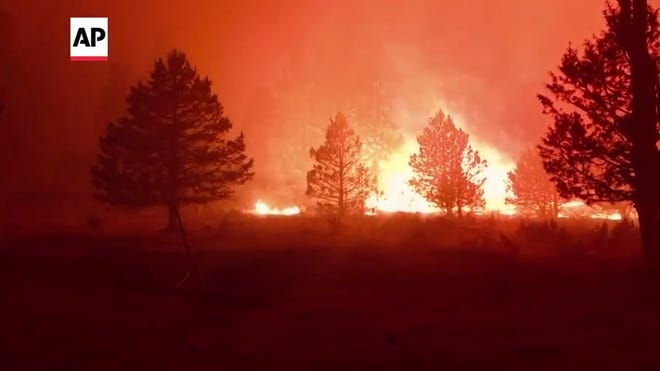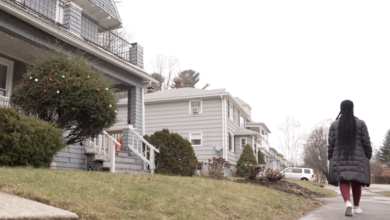
If you've been noticing more colorful sunsets and a haze on the horizon in Greater Cincinnati, you can blame wildfire smoke.
Expect it to stick around.
Skies across the Eastern U.S. will see haze through the first half of the week as smoke from fires across the Pacific Northwest and Canada migrate across the country.
"The haze you see in the sky is indeed wildfire smoke high up in the atmosphere. According to our models, this haze will increase over the coming days, likely leading to some colorful sunrises and sunsets," local forecasters said.
According to the National Weather Service's High-Resolution Rapid Refresh Smoke model, the smoke reached the Greater Cincinnati area last week.

The map does not show smoke just at the surface. It shows vertically integrated smoke — the total smoke from the ground up through the atmosphere.
"These measurements are mapped to a three-dimensional grid that extends nearly 16 miles into the atmosphere. What results is a detailed forecast of the amount of smoke produced, the direction it should travel, and its plume height," according to NASA.
Due to the height of the smoke, it will likely cause hazy skies and very colorful sunsets due to the particles in the atmosphere.
More than 80 wildfires were burning through 1,157,976 acres in 13 states, battled by almost 20,000 firefighters, according to USA TODAY.
Generally, unstable weather conditions could add to the misery in the coming days, the National Interagency Fire Center warned.
The Dixie Fire has grown to 29 square miles, largely in remote wilderness. Located in north-central California, it was threatening more than 800 homes and other structures.
In Oregon, the Bootleg Fire has burned almost 500 square miles and is among the largest blazes in Oregon history, but it's located in a remote area away from population masses. At least 2,000 homes have been evacuated at some point during the fire and another 5,000 threatened.
USA TODAY reported that powerful storms in the forecast for parts of the drought-stricken West this week could actually do more harm than good as "fire clouds" and dry lightning sweep across a region already dotted with wildfires fueled by parched vegetation, heat and winds.
More:What's a pyrocumulus? Oregon wildfire forms 'fire clouds' that pose danger below
Source link










